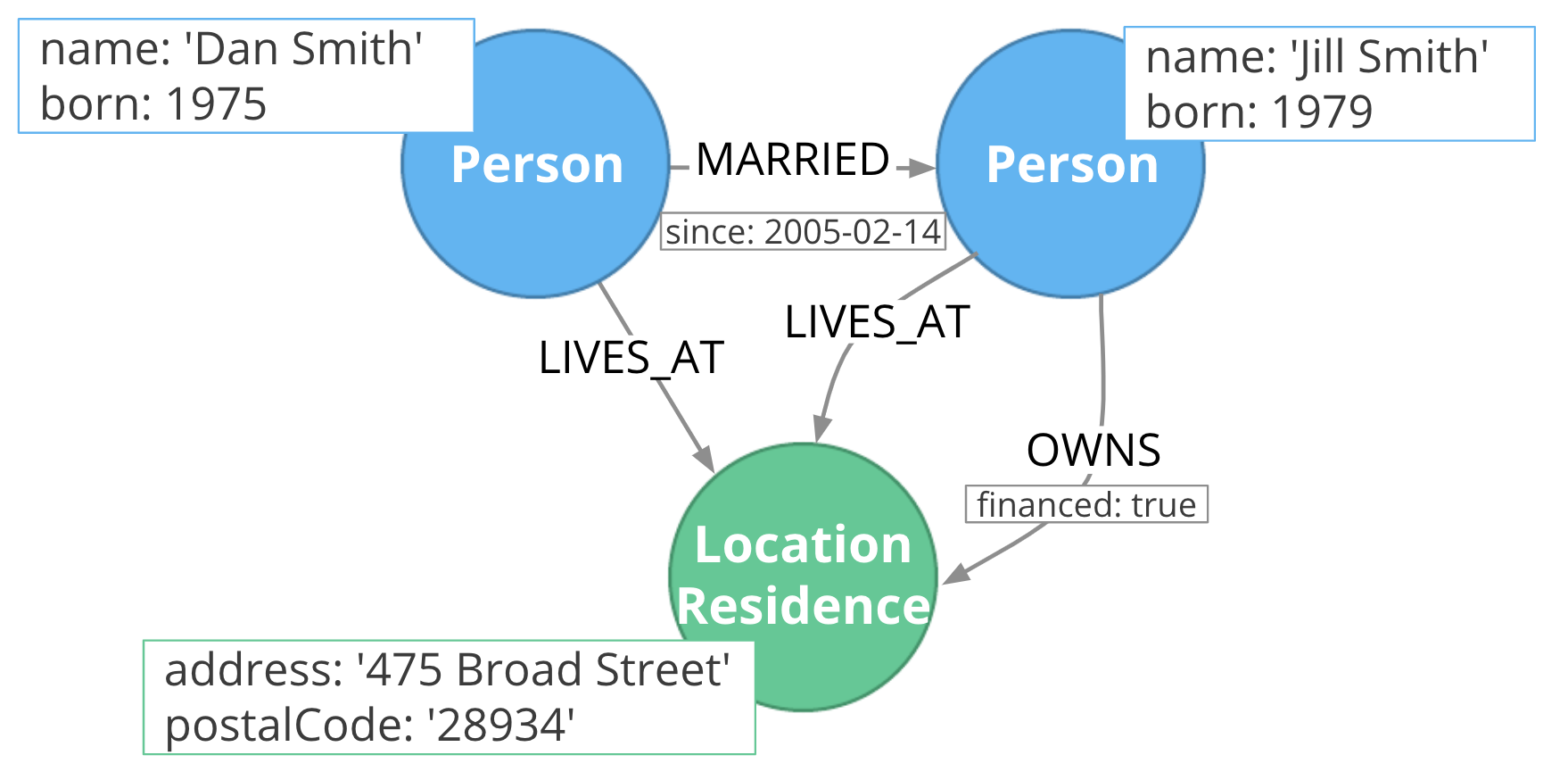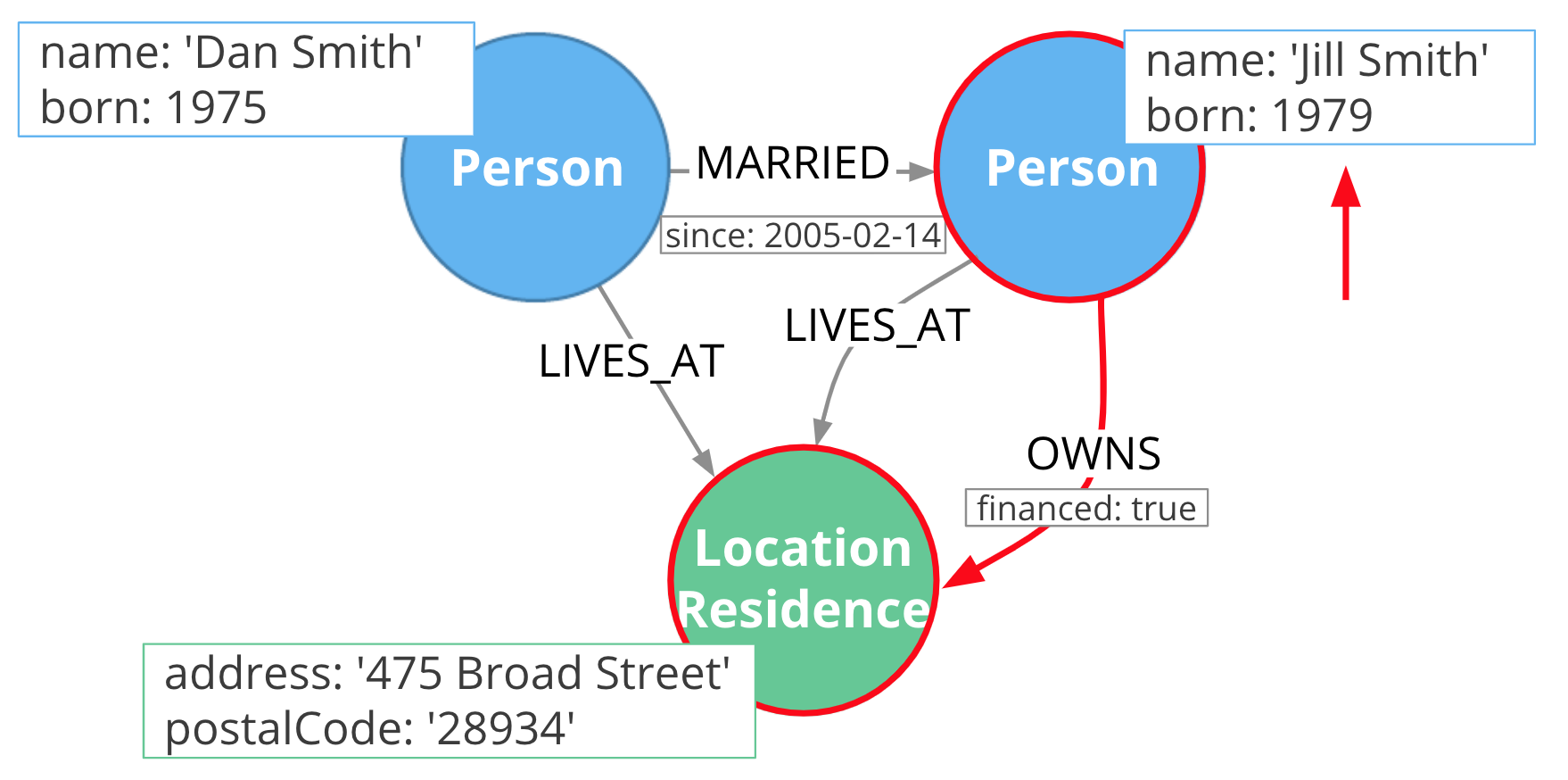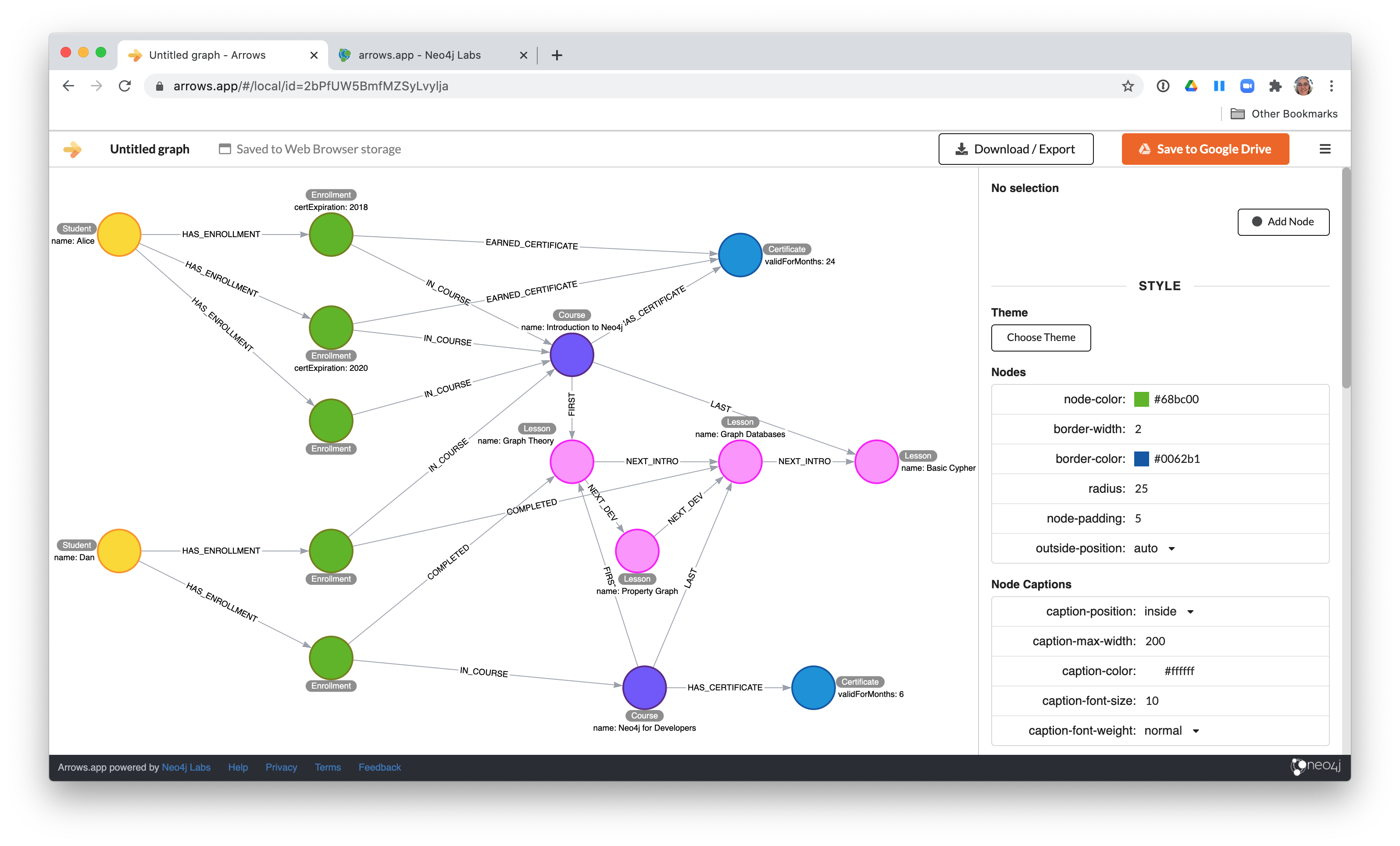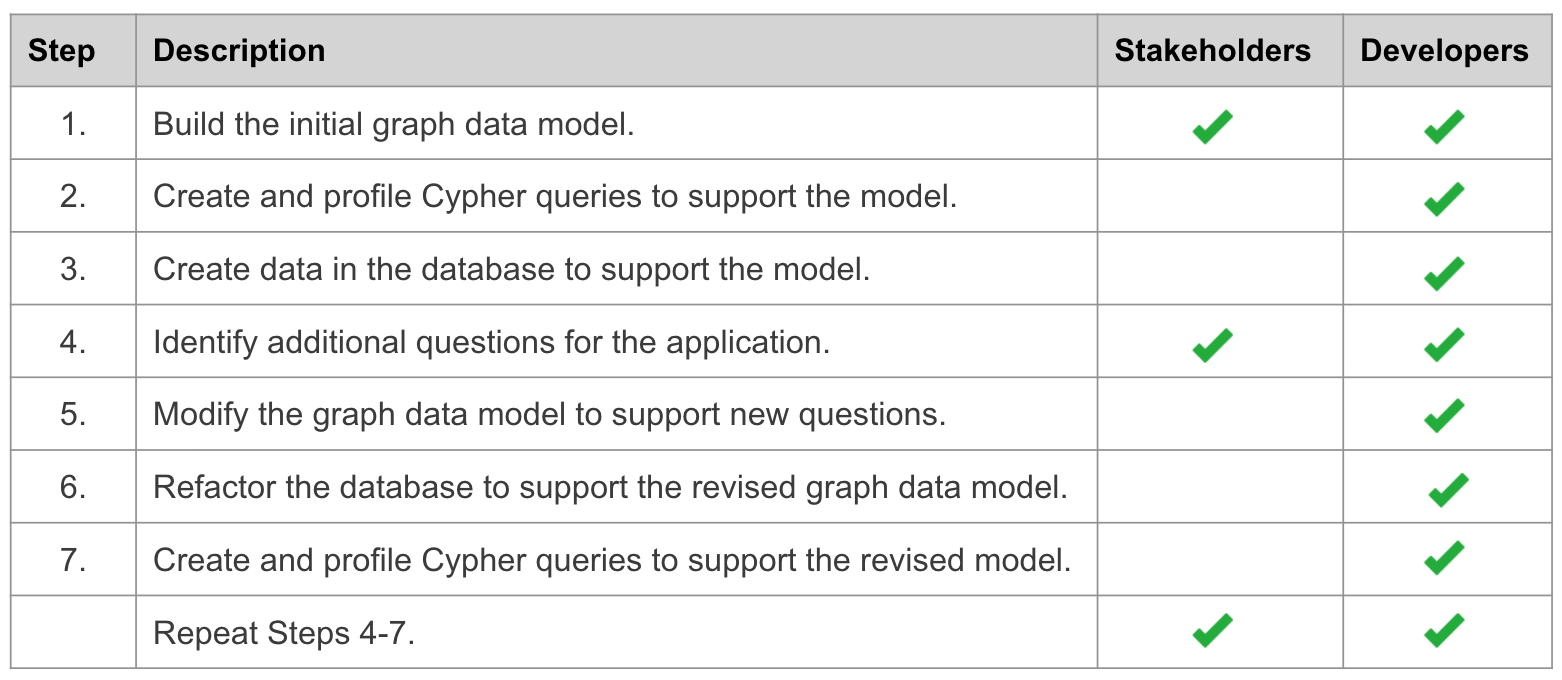Introduction to Graph Data Modeling
About this module
At the end of this module, you will be able to:
-
Describe what graph data modeling is.
-
Describe how Neo4j supports graph data modeling.
-
Describe the tools you can use for graph data modeling.
-
Describe the workflow for graph data modeling.
What is graph data modeling?
Graph data modeling is a collaborative effort where the application domain is analyzed by stakeholders and developers to come up with the optimal model for use with Neo4j. Stakeholders must understand the domain and be prepared to ask detailed questions about how the business-at-hand operates.
Stakeholders are:
-
Business analysts
-
Architects
-
Managers
-
Project leaders
How does Neo4j support graph data modeling?
-
Neo4j is a full-featured graph database that allows you to create property graphs.
-
Applications retrieve data for business use cases by traversing the graph.
Neo4j Property Graph Model
-
Nodes (Entities)
-
Relationships
-
Properties
-
Labels

Nodes and relationships are the key components of a graph. Nodes must have labels to categorize entities. Relationships must have direction and type. Nodes and relationships can have properties. A label is used to categorize a set of nodes. Properties are used to provide specific values to a node or relationship.
Traversal in the graph

MATCH (r:Residence)<-[:OWNS]-(p:Person)
WHERE r.address = '475 Broad Street'
RETURN pTraversal means anchoring a query based upon a property value, then traversing the graph to satisfy the query.
In this example, the address property of the Residence node is used to determine where to anchor the query.
Then, the OWNS relationship is traversed to retrieve the qualifying nodes.
A relationship is only traversed once in a MATCH clause.
Tools for graph data modeling

There are many ways that developers and stakeholders can work together to build a graph data model for their application. Drawing it on a whiteboard may be done initially, but you will need to share your model with others so using a tool is recommended. The tool that we use in this course is the Arrows tool which integrates with Neo4j. With the Arrows tool, you can generate Cypher statements for creating code to implement the model.
Workflow for graph data modeling

Data model maintenance is cyclical and iterative. We are comfortable with this idea because updating a graph model is much cheaper and easier than updating the schema of a tabular store. Ease-of-updating will be a consistent theme throughout this training.
Check your understanding
Question 1
What elements of a Neo4j graph are used to categorize entities?
Select the correct answer.
-
Relationship
-
Property
-
Node
-
Label
Question 2
Which statements below are true about Neo4j graph traversal?
Select the correct answers.
-
Traversal during a query starts at a set of anchor nodes.
-
Traversal during a query ends at an anchor node.
-
A relationship is only traversed once in a
MATCHclause. -
A relationship can be traversed multiple times in a
MATCHclause.
Summary
You can now:
-
Describe what graph data modeling is.
-
Describe how Neo4j supports graph data modeling.
-
Describe the tools you can use for graph data modeling.
-
Describe the workflow for graph data modeling.
Need help? Ask in the Neo4j Community